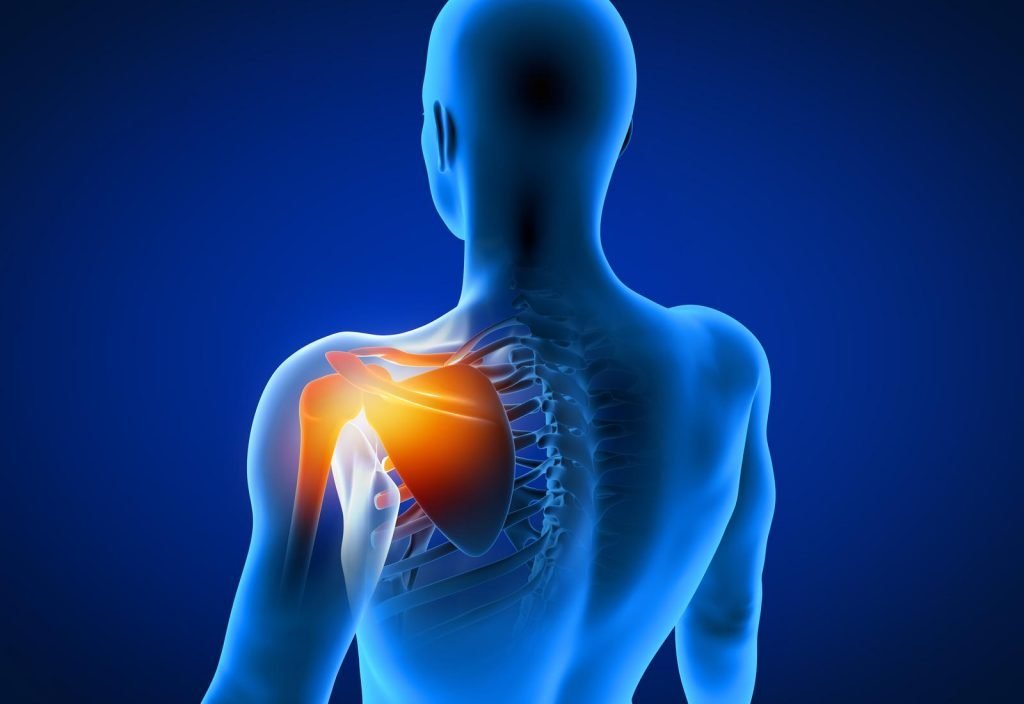Embark on a fascinating journey into the intricate world of shoulder anatomy as we delve into the functions and importance of muscles and tendons in maintaining shoulder health. Gain a deeper understanding of how these structures work together to facilitate movement and stability, setting the stage for optimal shoulder care.
Introduction to Shoulder Anatomy
Welcome to the first installment of our shoulder series! In this blog post, we will delve into the intricate world of shoulder muscles and tendons, unraveling their functions and importance in maintaining shoulder health. Get ready to explore the foundation of shoulder anatomy and gain a deeper understanding of how these structures work together to facilitate movement and stability.Delve into the Complexities of Shoulder Joint Structures and Functions
Today, we embark on a fascinating journey into the intricate world of shoulder anatomy. As you delve into the complexities of the shoulder joint, you’ll gain a deeper understanding of its structures and functions. Let’s explore the overview of the shoulder joint, its classification as a synovial joint, and the remarkable range of motion and functionality it offers.Gain Insights into the Remarkable Range of Motion and Functionality of the Shoulder Joint
The shoulder joint, a marvel of biomechanical engineering, is renowned for its exceptional mobility and versatility. Comprising a complex network of muscles, tendons, and bones, the shoulder joint allows for a wide range of movements essential for daily activities and athletic performance. At the core of the shoulder joint are key muscles like the supraspinatus, infraspinatus, and subscapularis, each playing a crucial role in arm movement and stability. The intricate interplay between these muscles ensures smooth coordination and functionality of the shoulder joint.Understand the Classification of the Shoulder Joint as a Synovial Joint
The shoulder joint falls under the category of synovial joints, characterized by the presence of a synovial membrane that secretes synovial fluid. This fluid lubricates the joint, reducing friction and allowing for smooth, pain-free movement. Being a synovial joint, the shoulder exhibits remarkable flexibility, enabling a wide range of motion in various directions. This unique feature sets it apart from other types of joints in the body, highlighting its importance in everyday activities and physical performance.Overview of the Shoulder Joint
Welcome to the first part of our shoulder series, where we will take a closer look at the intricate network of muscles, tendons, and bones that compose the shoulder joint. By exploring this foundation, you will gain a better understanding of the core muscles such as Supraspinatus, Infraspinatus, and Subscapularis, as well as the classification of the shoulder joint as a synovial joint.Exploring the Intricate Network
As you delve into the world of the shoulder joint, you will discover a complex system of muscles, tendons, and bones that work together to provide mobility and stability. This intricate network allows for a wide range of movements crucial for daily activities and athletic performance.Understanding Core Muscles
Key muscles like Supraspinatus, Infraspinatus, and Subscapularis are fundamental to the functionality of the shoulder joint. These muscles play essential roles in arm movement and stability, ensuring smooth coordination and efficient functionality of the shoulder.Classification as a Synovial Joint
The shoulder joint is classified as a synovial joint, distinguished by the presence of a synovial membrane that secretes synovial fluid. This fluid acts as a lubricant, reducing friction within the joint and enabling pain-free movements. The synovial nature of the shoulder joint allows for remarkable flexibility and a broad range of motion in different directions, setting it apart from other joint types. By comprehending the intricate details of the shoulder joint, including its muscular composition and classification, you are equipped to appreciate the marvel of biomechanical engineering that is the shoulder joint. Stay tuned for further insights into shoulder anatomy as we continue to explore its complexities.Key Muscles: Supraspinatus, Infraspinatus, Subscapularis
Welcome to the second section of our blog series on shoulder anatomy. In this segment, we will explore the key muscles of the shoulder – the Supraspinatus, Infraspinatus, and Subscapularis. Understanding the function and importance of these muscles is crucial for maintaining shoulder health and preventing injuries.Supraspinatus: Function and Location
The Supraspinatus muscle plays a vital role in shoulder movement. Located along the back of the shoulder, this muscle extends under the scapula and attaches to the top of the humerus. Its primary function is to facilitate arm movement in an up and down motion. Strengthening the Supraspinatus muscle is essential for overall shoulder stability and range of motion.Infraspinatus: Role in External Rotation
The Infraspinatus muscle is situated just beneath the Supraspinatus. This muscle plays a key role in external rotation of the arm. By aiding in outward movement, the Infraspinatus muscle helps in various daily activities such as reaching, lifting, and throwing. Maintaining flexibility and strength in the Infraspinatus is crucial for preventing shoulder injuries.Subscapularis: Importance of Internal Rotation
The Subscapularis muscle, located underneath the shoulder blade, is responsible for internal rotation of the arm. This muscle is essential for activities that involve bringing the arm towards the body, such as hugging or reaching behind the back. Proper functioning of the Subscapularis muscle is vital for overall shoulder mobility and stability. By understanding the roles of the Supraspinatus, Infraspinatus, and Subscapularis muscles, you can better appreciate the intricate mechanics of the shoulder joint. Incorporating specific exercises to target these muscles can help improve shoulder strength and prevent common issues such as rotator cuff injuries.Other Structures: Clavicle, Humerus, Bursa
Welcome to this section where we will explore the roles of supporting bones like the clavicle and humerus in enhancing shoulder mobility, the importance of the bursa in cushioning and reducing friction within the shoulder joint, and how inflammation of the bursa can impact shoulder health.Discovering the Roles of Clavicle and Humerus in Shoulder Mobility
When it comes to your shoulder’s intricate anatomy, the clavicle (collarbone) and humerus (arm bone) are indispensable structures that significantly contribute to your shoulder’s functionality and stability. The clavicle acts as a crucial link between the shoulder blade and the sternum, providing essential support and enabling a wide range of motion. On the other hand, the humerus plays a pivotal role in connecting the shoulder to the elbow, allowing for various arm movements. These supporting bones—clavicle and humerus—work together to form a robust foundation that supports your shoulder joint, enabling everyday activities such as lifting, reaching, and arm rotation.- The clavicle provides support and links the shoulder blade to the sternum.
- The humerus connects the shoulder to the elbow, facilitating arm movements.
- Proper alignment and function of these bones are essential for shoulder mobility.
Understanding the Significance of the Bursa in Shoulder Health
Within the intricate network of structures in the shoulder joint, the bursa—a fluid-filled sac—plays a vital role in cushioning and reducing friction between bones, tendons, and muscles. This cushioning effect allows for smooth movement of the shoulder joint during various activities, enhancing overall joint function. However, when the bursa becomes inflamed, a condition known as bursitis, it can lead to pain, swelling, and limited mobility in the shoulder. Bursitis is often triggered by repetitive movements, overuse injuries, or underlying medical conditions. Proper care and management of bursitis are crucial in alleviating symptoms and preventing further complications.Remember, taking care of your shoulder’s bursa is as important as maintaining the health of your bones and muscles for optimal shoulder function.





